Succulents are an amazing view of plants that conquer the hearts with their unusual beauty and unpretentiousness in care. All they need - a lot of scattered light, a comfortable pot and a bit of your care. A feature of this group of plants is the ability to accumulate water in its bizarre leaves, and for a long time to do without watering in drought conditions. This allows succulents to adapt to any conditions, continuing to grow well. That is why they are actively used in the design of apartments, public institutions and, of course, gardens. How to grow succulents so that they felt comfortable and diligently, let's talk in this article.
Succulent flowers - general description of plants
Succulents are a large group of plants that consist of special cells capable of accumulating water in large quantities. From Latin, the term "succulentus" is translated as "juicy", which fully corresponds to such plants.
The succulent group includes many different crops, which are often not even interconnected by family relationship or general origin. And their similar external features are caused by the same climatic growing conditions - rocky terrain and arid weather.
On the principle of accumulation of water reserves, succulents are divided into sheets - sheets and strokes. The first type of succulents accumulates moisture in bulk leaves. The most famous representatives are Aloe, Havorti, Calanchoe and MEDO.
The second view is able to choose the moisture ribbed and a little thickened stem. Leafers in stem succulents are often small non-thickened or at all transformed into sharp spines. Stems are thickly covered with snacks or small barns, which protects plants from eating animals in the natural area of \u200b\u200bgrowth - in America's deserts or dry African regions. Most representatives of the cactus family - Carnegia, Monzolia, Ceresis, as well as lithopsy (flowers-stones).
Interesting! Many are mistaken, thinking that cacti and succulents are the same plants. In fact, all cacti really belong to the overall group of succulent, as well as many other families. But not all succulents are cacti, so you should not identify these two concepts.
Since the succulents include representatives of various families, it is very difficult to describe their botanical features. Therefore, we consider the overall features of plants that combine them in one category:
- Succulent is considered to be a plant with high drought-resistant abilities in a pair with the ability to accumulate moisture in juicy leaves or stems.
- All succulents come from dry, dusty and hot countries, so frequent rains or abundant irrigation produce a detrimental effect on them.
- Succulent plants are capable of developing normally and even bloom when watering just a few times a year.
- Slim wax raid (cuticle), which seems to the SIZY in the sun, serves as a shield from the scorching sun and the wrong moisture consumption. Some species that do not have such a coating, densedly flooded on the stems.
- The protective mechanism of succulents is to die off the above-ground part in the event of a long drought and its full recovery after the appearance of moisture.
- All succulents have very elastic leaves and ribbed rod, which allows the top layer of the plant not to burst during the accumulation of water in it.
Succulents - Home Care
For cultivation and to create decorative compositions, it is better to use cultivated and suitable succulents for these purposes. The minimum trouble in care creates such succulents as Agava, Aloe, Faucaria, Tetragonium, Titanopsis, Mokha, Echeveria, and most cacti species.
It is believed that the succulents do not need to be careful and can increase in itself for months, it is not entirely true. Of course, they are very patient to launch, but there is still a little care. Therefore, the basic skills of how to care for succulents, you need to master all novice flows.
Required climatic conditions for succulents
The cultivation of succulents becomes a fascinating process, if from the very beginning to choose a good sunny place for plants. But the intensity and duration of sunlight should be selected taking into account the specific type of succulent.
The perfect place for succulent is a solar veranda, windowsill, but if the apartment is well lit by the daily sun, then the vase can be put in any place. The shadow of succulents suffer badly and quickly begin to stretch up, exposed to different diseases.
Succulents feel better in dry and hot houses, but the high humidity harms plants and can cause their posture. The optimal mode for most succulents of the house - 20-25⁰s in summer, and 5-15 ° C in winter during their sleep. Also, many plants need vibrations of the night and daytime temperature in the range of 5-10 ° C.
Selection Pot and soil for succulents
The soil for succulents is needed mineral, largely sandy and necessarily loose. Succulents can also be fully growing even in a stone environment, for example, in gravel with a minimum amount of land.
More convenient to buy ready-made soil for succulents with an optimally selected composition. For example, succulents are well developed in the Biagro soil or in the soil composition "Vermion" with the additional content of biohumus. The acidity of a special role for succulents does not play, but it is better to choose a neutral pH.
An exception is epiphytic succulents, which need a special land for succulents, as well as for orchids. It contains wood bark, coal and moss.
You can make the soil and independently. This will require sheet soft, sand and pebbles in a 2: 2: 1 ratio. Instead of pebbles, you can use broken brick, vermiculite or perlite.
For group landing of succulents is more suitable for mineralized soil. It should have enough potassium, to moderate phosphorus and very little nitrogen. To improve the looseness and drainage, you can add to the finished mixture the crushed clay.
Pots for succulents can be the most different. The size of the vase does not matter, the main thing is that the succulents in it beautifully looked. You can use classic ceramics or plastic containers.
At the peak of popularity is now the creation of unique compositions from succulents in the form of a mini-garden. To do this, use a variety of glass flurarals in the form of balls, triangles or broken geometric shapes.
It is also often used vertical landing of succulents into special boxes with metal lattices inside, which hold the roots of plants. Such vases resemble live paintings on the walls.
How to plant succulents
Succulent landing has its own characteristics whose compliance will determine the further growth of colors:
- To begin with, no matter what the soil you have, homemade or purchased, it is necessary to warm it in the oven for succulents. This is to displaced the soil from malicious bacteria. You also need to disinfect all working tools and a pot.
- On the bottom of the vason you need to lay the ball of any pebbles or broken bricks. The volume of drainage should be no more than ¼ vase, and the magnitude of the fraction is selected in accordance with the holes in the bottom.
- Further, you should pour the prepared soil by hitting the vase at an angle of 45⁰.
- Then the transshipment method hold the landing of succulents to the Vase, fill the emptiness of the earth. Putting a vase into a vertical position, knocking a little on the walls, so that the succulent, together with the soil she asked well.
- From above you need to put a thin layer of fine clay around the open root neck. It will save her from the development of rot.
- Watering after the transplant is not carried out and only after 3-5 days, when the plant adapts, you can pour it to moderately.
How to water succulents
Incorrect irrigation is the most common cause of the death of the plant. Roots should not be in the wet substrate. Watering is conducted moderate and infrequent, which depends on the size of the pot and season.
In the spring, it is recommended to water the plant once a week, and in the summer twice. In winter, most species sleep, so watering succulents from October to April is reduced to once a month. And all representatives of the family cactus are completely left without watering.
How to fertilize succulents
Supported subcuturates are needed only in summer. A month just once fertilize the plant and only during the growing season. Fertilizers for succulents should be with a small amount of nitrogen, since it contributes to the development of rot, and parasitic microorganisms. Therefore, potassium and phosphorus must prevail in fertilizer.
The amount of fertilizer made must be minimal, because the main goal of feeding does not speed up growth or flowering, but simply fill the partial loss of minerals that are washed out of the soil with water.
How to transplant succulents
Succulent landing should have to be at the spring months. Young succulents need to transplant annually, and starting from three years of age, once every 4-5 years.
It is necessary to exclude watering succulents 7 days before the planned transplant. Flowering succulents do not transplant, otherwise they will reset their buds.
Before starting work, the succulent is extracted from the previous pot and left outdoors for two days so that the root is completely pros. If the traces of damage to rot, the plant is pre-treated with a weak solution of manganese. The process itself occurs according to the usual landing scheme.
Reproduction of succulents at home
Succulents are propagated with cuttings, leaves and seed method. The choice of a suitable method is mainly determined by the type of succulent and its age.
Cultivation of succulents from seeds
Get a new plant from seeds is easy, but it is a rather long and time-consuming process. For landing, you can use seeds of succulents of a particular variety or buy mixes of different types.
Typical seed planting scheme looks like this:
- Seeds for 24 hours are immersed in the suspension of belands or in a weak solution of manganese.
- As a soil, a mixture of riable clay land and large sand is used.
- The soil is laid out in a flat container and sprinkled with a thin ball of fine sand, then sow seeds.
- The container with the seedle put in a warm and sunny place, and from above covered with any transparent shelter.
- The duration of the light day for indoor succulents should be 12-14 hours, the daily temperature is needed from 25 to 35⁰c, the night is not higher than 20⁰С.
- Signs of growth appear on 3-7 days, which depends on the type of succulent.
- Picking is carried out in 30-40 days, when the sand ball is covered with algae and air access is worsening to the roots.
The reproduction of succulents leaves
Succulents homemade easily multiply with fallen leaves. And some species can cut lateral sprouts and then root them in the prepared soil. But the leaves or cuttings do not need to be put into the water - they immediately start and disappear.
Cuttings need to be dried within two days, and then put on all the rules of landing of succulents. Three weeks later, the plant will let full-fledged roots. To accelerate the process, any stimulants for the formation of the root system can be used.
Advice! How to grown succulents and how to propagate them at home is determined by a specific view and its origin. Each view has its own requirements and needs an individual approach.
Succulent leaves can be cared or used just fallen. They need to be laid on the ground near the plant. Then you need to plug in the circle of fresh soil and in two weeks a sheet will independently start the roots.
A number of succulents, for example, calangeome or havroity, are multiplied by even fragments of the sheet. Part of the leaflet is dried, to a depth of 1 cm stick into the ground in a vertical direction.
Diseases and pests of succulents
Succulents at home are prone to diseases, and in case of improper care is often amazed by pests. Therefore, all the time you need to follow the first signs of the emergence of the problem, and immediately treat the plant, otherwise it will die.
Succulents are more likely to suffer from rotten bacteria. As a result of a strong irrigation begins to rot the root, and then the entire above-ground part die. The development of rotes also contributes to cold or, on the contrary, excessive heat over 35⁰s. Losing the diseased plant can be in a couple of days.
Noticing signs of mold on the leaves, you need to immediately cut the affected areas. If the stem is sick, it is cut to a healthy part. Unfortunately, the disease is found quite late when the succulent is no longer possible. Therefore, to preserve succulents, care should provide for the prevention of rot - competent irrigation, sufficient drainage, a bright place.
From pests, striking succulents, there are tripses, ticks and cherry. With the help of insecticides, you can get rid of the Cherwell and TRIPS. To do this, we need to treat the plant and soak the soil insecticide. For tick removal, a system action acaricide is needed.
Succulents, varieties
Succulents are represented by a huge variety of species and varieties that are difficult to distinguish between and even more remember their complex names. Therefore, consider the most common varieties.
Home succulents - titles:
- Agava - Succulent Succulent Sharov Form. The plant is formed from densely located leaves with white crossing. Differs in high decorativeness.
- Lithopsy are frequent guests of Rokariev. They are also called "alive stones" because they look outwardly resemble small boulders. Flower with bright yellow inflorescences resembling chamomile.
- Eonium tree - a large shrub in the form of a flower, the outlet of which form leafs of light green or red-purple color.
- Eheveria Agavovoid - a gentle plant with small juicy leaves collected in the form of green roses with a wax coating. This is a blooming succulent, which in summer hesitates a high boom with fire-red buds.
- Crasusla - Succulent known as "money tree". The plant comes from Africa, very unpretentious, rarely blooms and is more valued with its round glossy leaves. With proper formation, it grows up to 1.5 m in the form of a mini-tree.
- Staplia - the most beautiful succulent. The view has more than a hundred varieties, each of which is distinguished by unusually beautiful blossoms. It is often used to create decorative compositions at home and in the garden.
Succurates in the garden - Features of care and cultivation
If you build a suitable place in my garden, you can get an exotic flowerumbu with succulents. To do this, you will need to choose the most sunny plot with an elevation without seasonal flooding.
Gardening soil for succulents does not fit, so you have to pick up the top of the soil (approximately 20 cm), pour a high layer of drainage and suitable soil for succulents.
Only cold-resistant varieties are planted in the prepared bed, for example, Maihuenia PoEppigii or Macrorhiza. And the thermal-loving succulents are better to leave in pots and take home for the winter.
The main care and reproduction of succulents in the open soil is the same as at home.

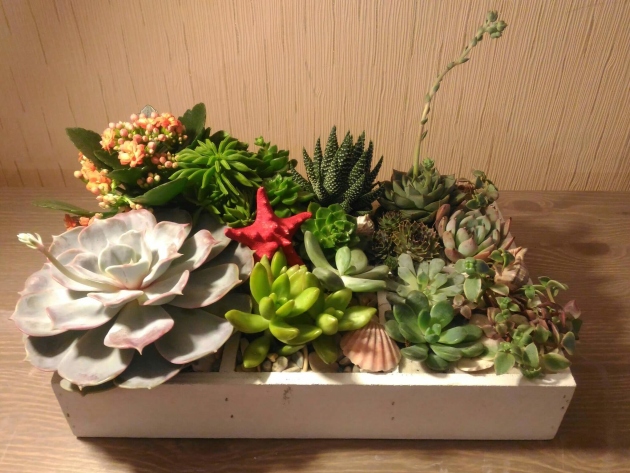
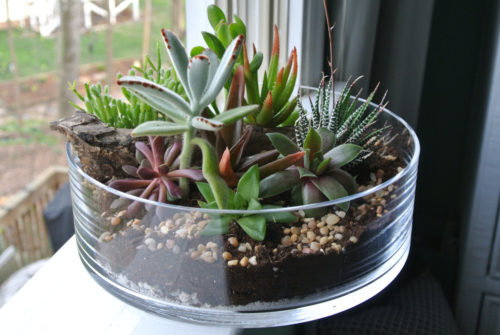
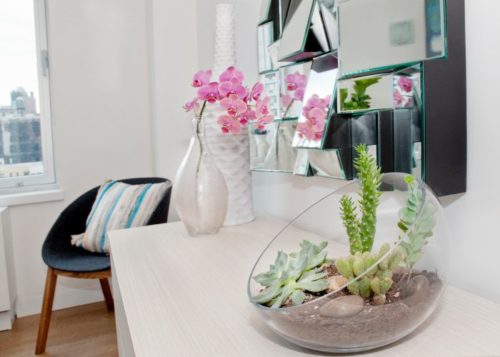
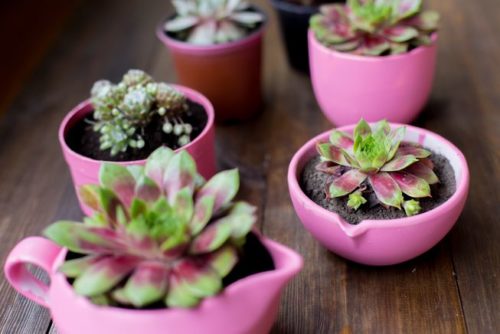
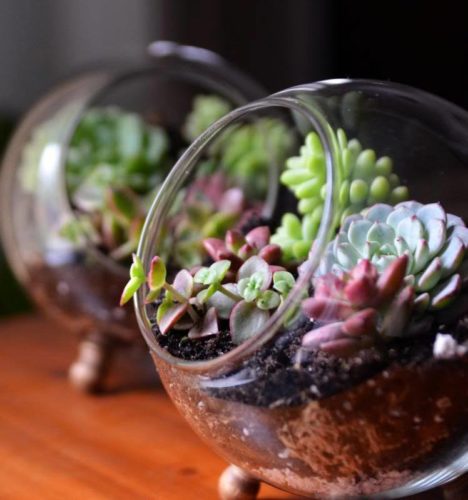
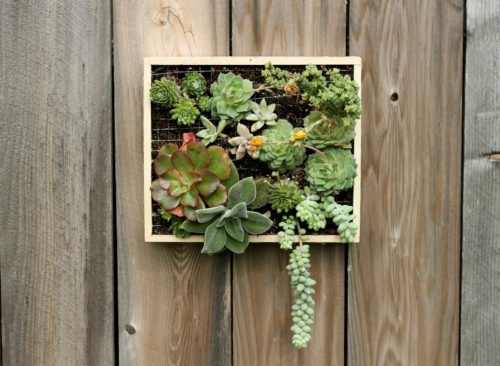
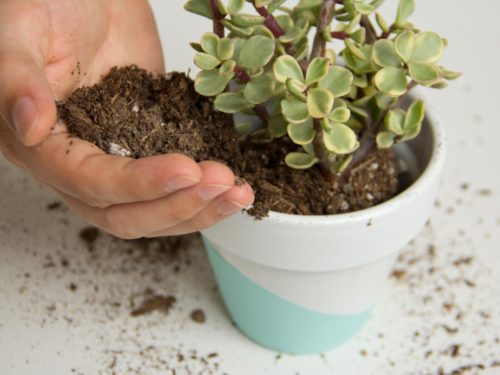
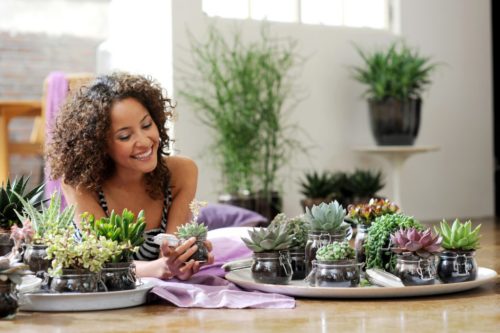
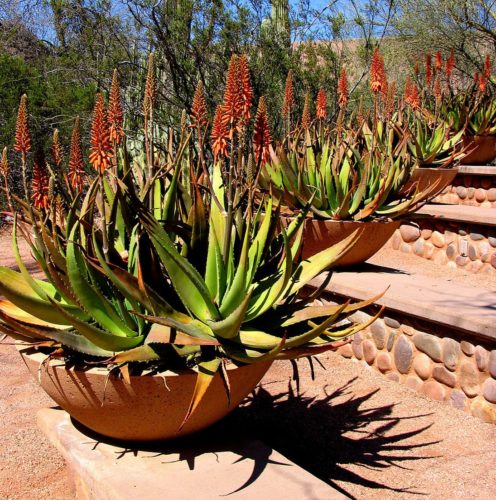
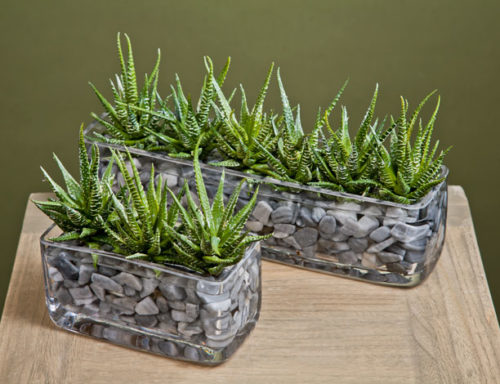
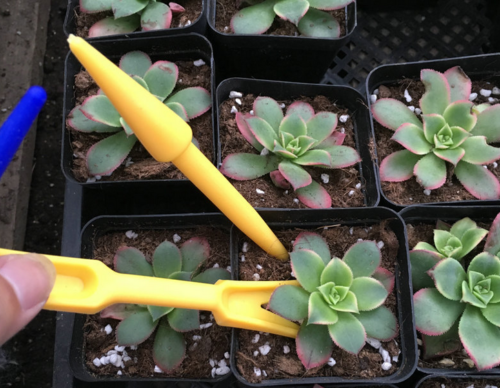
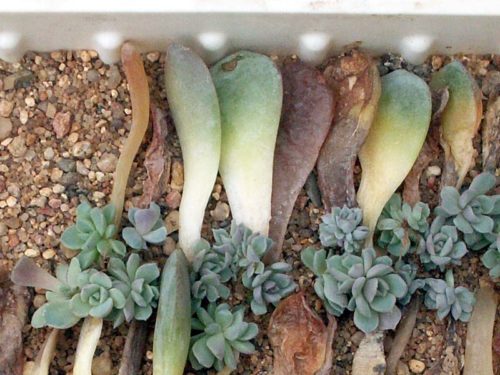
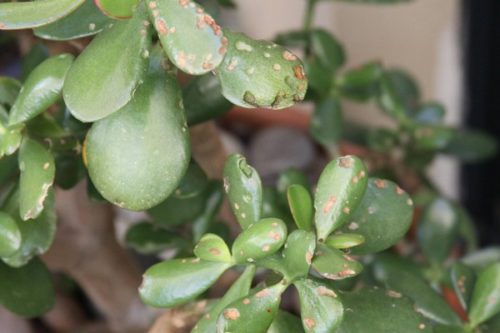

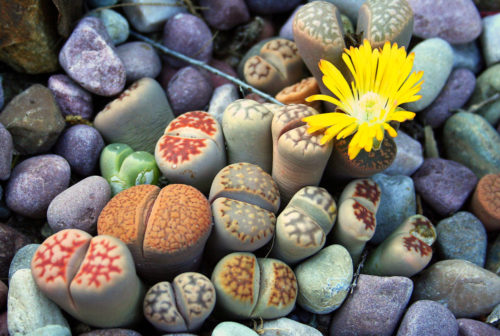
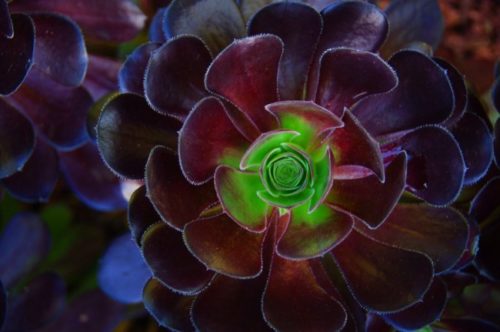


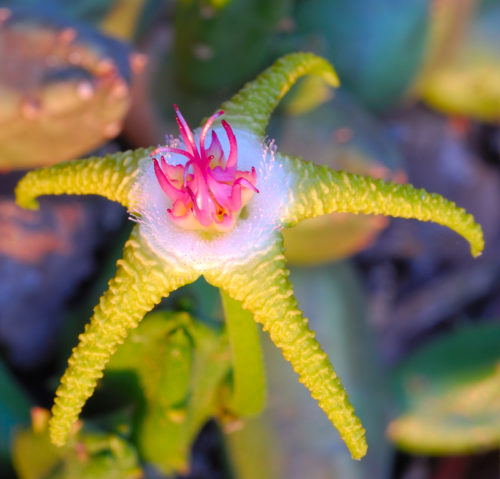
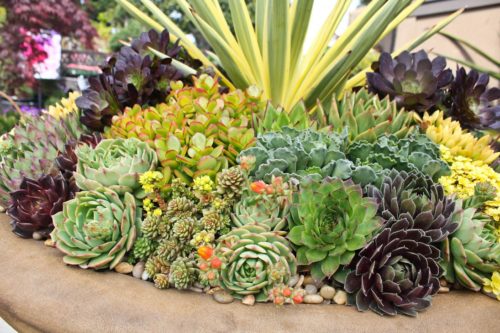
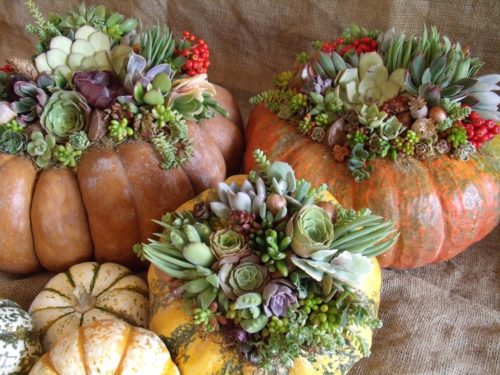
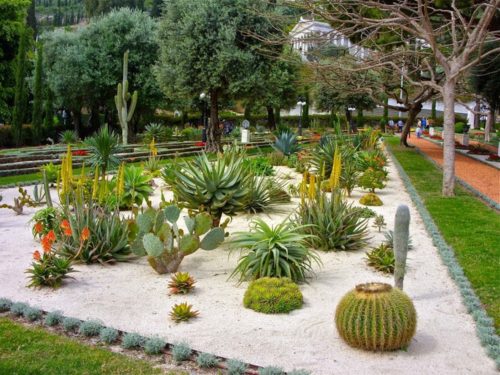
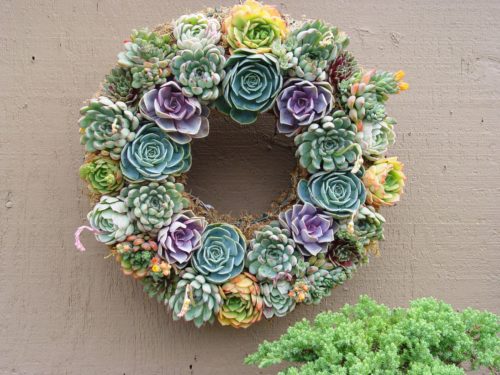
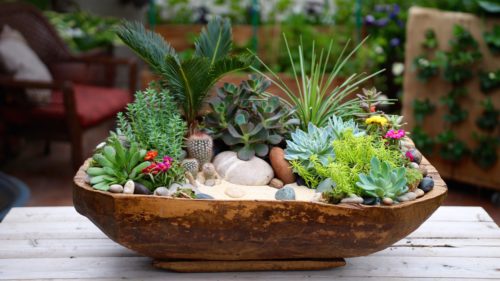
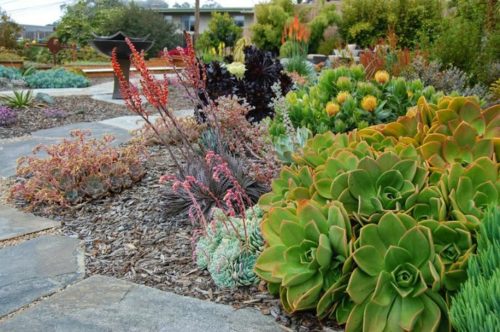
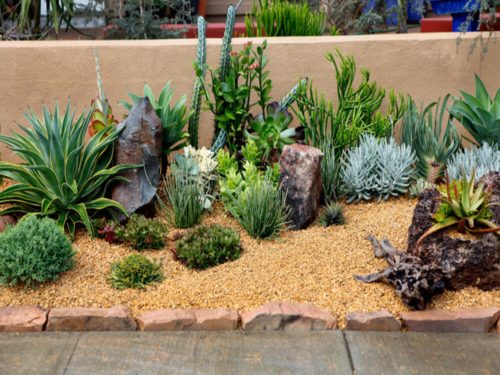
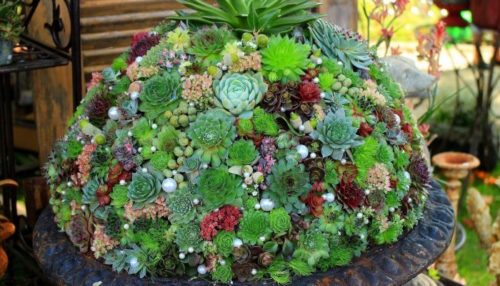
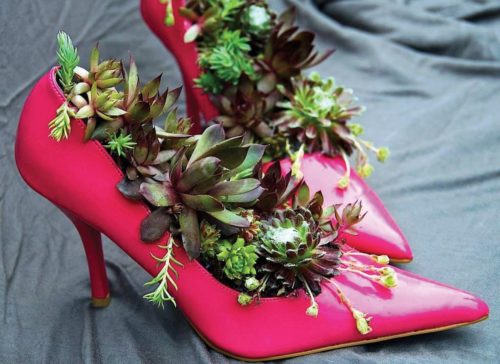
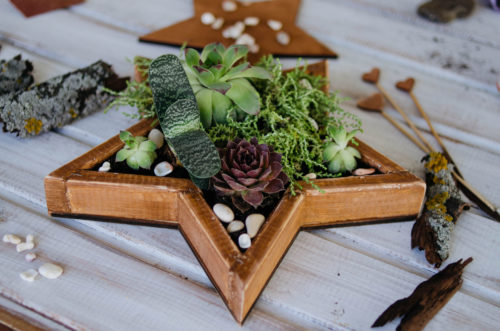














 Start a discussion ...
Start a discussion ...